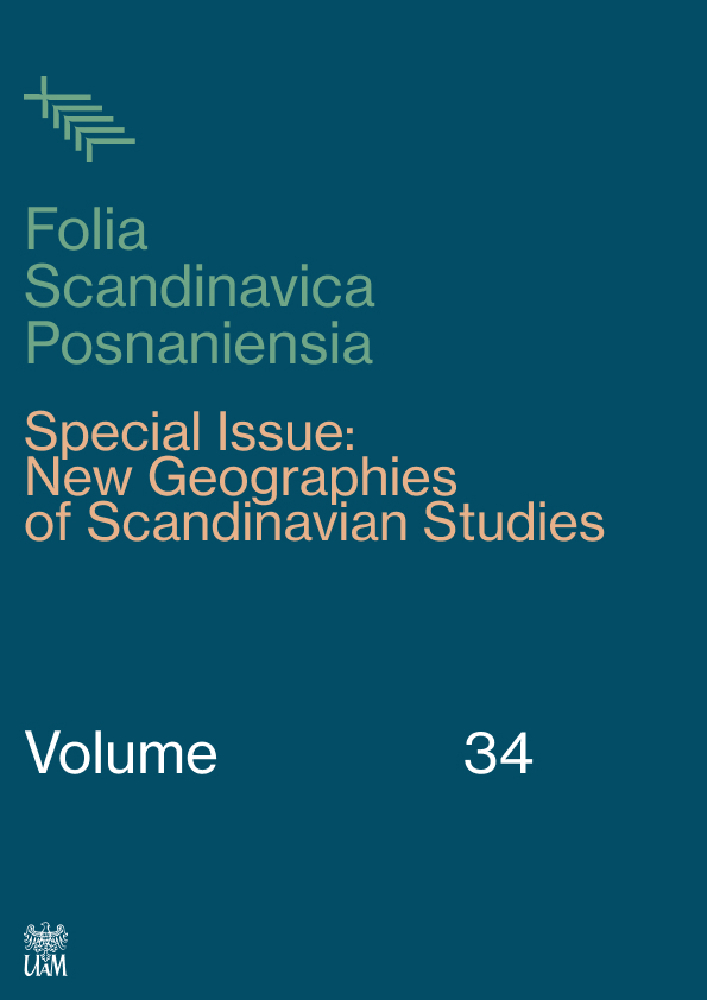Abstract
The Baltic Sea has effectively separated the Scandinavian and Eastern European countries, especially in the period when this body of water constituted a part of the Iron Curtain and functioned for Scandinavians as an imaginary protective moat. From the East-Central European perspective, the Baltic Sea offered a hope of escape to freedom, encapsulated in the cinematic trope of the sea as a ‘blue boundary’, or a ‘horizon of hope’. But the Baltic Sea was also feared as a life-threatening border, as expressed in the trope of ‘Baltic noir’, a variation of the ‘Eastern noir’ trope (Mrozewicz 2018) – imagining the sea in nocturnal scenery as wild and under state control. The article discusses screen representations of the Baltic Sea understood as performative regioscaping practices (Chow 2021), offering insights into the memories and histories of human mobilities across the Baltic Sea beyond official narratives, as well as into the human relationship with the sea as both a cultural boundary and material body of water. As demonstrated by the analyzed film examples, Christian Petzold’s Barbara (2012, Germany) and Ilze Burkovska-Jacobsen’s My Favorite War (2020, Norway, Latvia), the Baltic Sea continues to be an important spatiotemporal node in the transnational re-telling of the region’s history and identity.
References
Alaimo, S. (2013). Violet-Black. In J. J. Cohen (ed.), Prismatic ecology: Ecotheory beyond green (pp. 233–251). Minneapolis: University of Minnesota Press. DOI: https://doi.org/10.5749/minnesota/9780816679973.003.0012
Bayraktar, N. (2019). Beyond the spectacle of ‘refugee crisis’: Multi-directional memories of migration in contemporary essay film. Journal of European Studies 49(3–4), 354–373. DOI: https://doi.org/10.1177/0047244119859155
Chambers, I. (2004). The Mediterranean. A postcolonial sea. Third Text 18(5), 423–433. DOI: https://doi.org/10.1080/0952882042000251769
Chow, P.-S. (2021). Transnational screen culture in Scandinavia. Mediating regional space and identity in the Øresund region. Cham: Palgrave Macmillan. DOI: https://doi.org/10.1007/978-3-030-85179-8
Czapliński, P. (2023). Coming to terms with the North. Scandinavia in Polish culture at the turn of the 21st century. Folia Scandinavica Posnaniensia 34, 16–30.
Dobrin, S. I. (2021). Blue ecocriticism and the Oceanic imperative. London, New York: Routledge. DOI: https://doi.org/10.4324/9780429456466
Ludewig, A. (2004). Screening the East, probing the past: The Baltic Sea in contemporary German cinema. German Politics & Society 22(2(71)), 27–48. DOI: https://doi.org/10.3167/104503004782353276
Malmborg, M. af (2001). Neutrality and state-building in Sweden. Basingstoke: Palgrave. DOI: https://doi.org/10.1057/9781403900920
Marzec, A. (2019). Niebieska humanistyka: materialno-dyskursywne doświadczenie oceanu w kinie współczesnym. Mocak Forum 15, 60–67.
Mrozewicz, A. E. (2018). Beyond Eastern Noir. Reimagining Russia and Eastern Europe in Nordic cinemas. Edinburgh: Edinburgh University Press. DOI: https://doi.org/10.1515/9781474418119
Mrozewicz, A. E. (2023). Cinema as a safe vessel. Jonas Poher Rasmussen’s Flee (2021). Journal of Scandinavian Cinema 13(3), 301–23. DOI: https://doi.org/10.1386/jsca_00099_1
Neimanis, A. (2017). Bodies of water. Posthuman feminist phenomenology. London: Bloomsbury. DOI: https://doi.org/10.5040/9781474275415
Wæver, O. (1992). Nordic nostalgia: Northern Europe after the Cold War. International Affairs 68(1), 77–102. DOI: https://doi.org/10.2307/2620462
License
Copyright (c) 2023 Anna Estera Mrozewicz

This work is licensed under a Creative Commons Attribution 4.0 International License.

